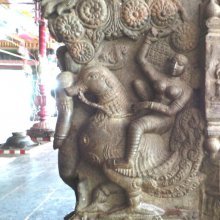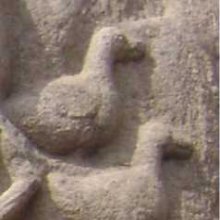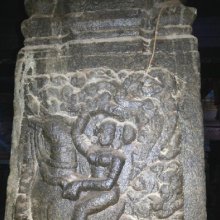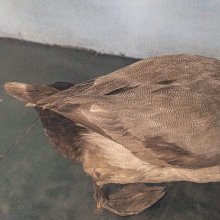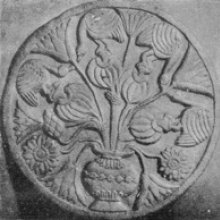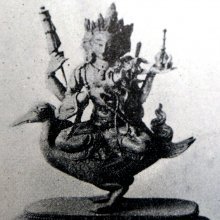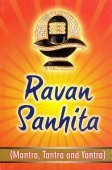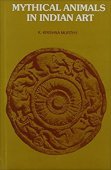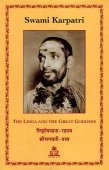Swan: 7 definitions
Introduction:
Swan means something in Buddhism, Pali, Hinduism, Sanskrit, Hindi, biology. If you want to know the exact meaning, history, etymology or English translation of this term then check out the descriptions on this page. Add your comment or reference to a book if you want to contribute to this summary article.
Images (photo gallery)
(+1 more images available)
In Hinduism
Natyashastra (theatrics and dramaturgy)
Source: Shodhganga: Elements of Art and Architecture in the Trtiyakhanda of the Visnudharmottarapurana (natya)1) The Swan is denoted by the Sanskrit term Haṃsa, whereas Haṃsapakṣa-hasta refers to one of the twenty-two Single-hand Gestures (in Indian Dramas) (known as asaṃyuktahastas), according to the Viṣṇudharmottarapurāṇa, an ancient Sanskrit text which (being encyclopedic in nature) deals with a variety of cultural topics such as arts, architecture, music, grammar and astronomy.—The word haṃsapakṣa consists of two words viz., haṃsa and pakṣa. The word haṃsa is already explained in the context of haṃsavaktrahasta. It means swan. The word pakṣa means wings. So the word haṃsapakṣa denotes the wings of a swan. In the Viṣṇudharmottarapurāṇa, this hand posture is described as one where the little finger of the hand is lifted crookedly and the thumb is bent.
2) The Gait of the Swan is denoted by the Sanskrit term Haṃsagati, and represents one of the various Gatis (“way of walking”) (in Indian Dramas), according to the Abhinayadarpaṇa.—Accordingly, gaits (gatis) are explained along with some particular hand gestures. It shows that footsteps are to be followed by some hand postures. In the gait of swan i.e., haṃsa-gati, the actor or dancer should place one foot after another. The distance between two feet should be half a cubit and the hands should be in kapitthahasta.

Natyashastra (नाट्यशास्त्र, nāṭyaśāstra) refers to both the ancient Indian tradition (shastra) of performing arts, (natya—theatrics, drama, dance, music), as well as the name of a Sanskrit work dealing with these subjects. It also teaches the rules for composing Dramatic plays (nataka), construction and performance of Theater, and Poetic works (kavya).
Vastushastra (architecture)
Source: Shodhganga: Elements of Art and Architecture in the Trtiyakhanda of the Visnudharmottarapurana (vastu)Swan-shaped Temples (in ancient Indian architecture) are denoted by the Sanskrit term Haṃsa, as described in literature such as the Viṣṇudharmottarapurāṇa, an ancient Sanskrit text which (being encyclopedic in nature) deals with a variety of cultural topics such as arts, architecture, music, grammar and astronomy.—It is quite difficult to say about a definite number of varieties of Hindu temples but in the Viṣṇudharmottarapurāṇa hundred varieties of temples have been enumerated. For example, Swan-shaped. These temples are classified according to the particular shape, amount of storeys and other common elements, such as the number of pavilions, doors and roofs. [...] The Viṣṇudharmottarapurāṇa relates that the temple named Haṃsa should be constructed in the shape of a Swan.

Vastushastra (वास्तुशास्त्र, vāstuśāstra) refers to the ancient Indian science (shastra) of architecture (vastu), dealing with topics such architecture, sculpture, town-building, fort building and various other constructions. Vastu also deals with the philosophy of the architectural relation with the cosmic universe.
Shilpashastra (iconography)
Source: Shodhganga: Elements of Art and Architecture in the Trtiyakhanda of the Visnudharmottarapurana (shilpa)1) The Swan is denoted by the Sanskrit term Haṃsa and represents one of the five types of men, defined according to the principles of ancient Indian Painting (citra), according to the Viṣṇudharmottarapurāṇa, an ancient Sanskrit text which (being encyclopedic in nature) deals with a variety of cultural topics such as arts, architecture, music, grammar and astronomy. According to the Viṣṇudharmottarapurāṇa, there are five types of men viz., the Swan, [...] The haṃsa (swan) type of man should have arms like the king of serpents, white complexion like moon, elegant and attractive eyes, fine waist and good-looking face. Moreover, the gait of haṃsa type of man should be like a Swan for which they are called so.
2) Swans (in water-ponds) are associated with the Autumn Season, which follows specific guidelines of ancient Indian Painting (citra).—The Viṣṇudharmottarapurāṇa gives some instructions to make the picture of every season beautiful and natural. The picture of the autumn season should include the water-ponds along with lots of swans and lotuses. [...] Thus, the Viṣṇudharmottarapurāṇa addresses various elements of nature, such as swans in the autumn season, since painting has much connection with time, mood and activity.
3) The Swan is associated with Varuṇa.—In the Viṣṇudharmottarapurāṇa, it is said that the image of Varuṇa should be placed on a chariot with seven swans. But according to the Kāśyapaśilpa as well as the Śilparatna, the idol of Varuṇa should be seated on a crocodile. Thus it is clear that the Viṣṇudharmottarapurāṇa offers a great field of knowledge regarding the nuances of Indian art of Image making [e.g., swans] during 10th–11th century A.D.

Shilpashastra (शिल्पशास्त्र, śilpaśāstra) represents the ancient Indian science (shastra) of creative arts (shilpa) such as sculpture, iconography and painting. Closely related to Vastushastra (architecture), they often share the same literature.
In Buddhism
Tibetan Buddhism (Vajrayana or tantric Buddhism)
Source: academia.edu: The Structure and Meanings of the Heruka Maṇḍala1) The Swan is associated with the Yoginī (female deity) named Haṃsī, being situated in the Vāyucakra, according to the 10th century Ḍākārṇava-tantra: one of the last Tibetan Tantric scriptures belonging to the Buddhist Saṃvara tradition consisting of 51 chapters.—Accordingly, the vāyucakra refers to one of the three divisions of the dharma-puṭa (‘dharma layer’), situated in the Herukamaṇḍala. The 36 pairs of Ḍākinīs [viz., Haṃsī—“Swan”] and Vīras are dark blue in color; they each have one face and four arms; they hold a skull bowl, a skull staff, a small drum, and a knife.
2) The Swan (animal) is associated with the Yoginī named Sārasā.

Tibetan Buddhism includes schools such as Nyingma, Kadampa, Kagyu and Gelug. Their primary canon of literature is divided in two broad categories: The Kangyur, which consists of Buddha’s words, and the Tengyur, which includes commentaries from various sources. Esotericism and tantra techniques (vajrayāna) are collected indepently.
Biology (plants and animals)
Source: Google Books: CRC World Dictionary (Regional names)Swan in Bolivia is the name of a plant defined with Zea mays in various botanical sources. This page contains potential references in Ayurveda, modern medicine, and other folk traditions or local practices It has the synonym Zea mays var. pennsylvanica Bonaf. (among others).
Example references for further research on medicinal uses or toxicity (see latin names for full list):
· Proceedings of the American Academy of Arts and Sciences (1891)
· Phytologia (1978)
· New York State Agric. Expt. Sta. Rept. (1884)
· Amer. Journal of Botany
· Enumeratio Stirpium Transsilvaniae (1816)
· Nomenclator Botanicus (1821)
If you are looking for specific details regarding Swan, for example pregnancy safety, side effects, health benefits, extract dosage, diet and recipes, chemical composition, have a look at these references.

This sections includes definitions from the five kingdoms of living things: Animals, Plants, Fungi, Protists and Monera. It will include both the official binomial nomenclature (scientific names usually in Latin) as well as regional spellings and variants.
Languages of India and abroad
Hindi dictionary
Source: DDSA: A practical Hindi-English dictionarySwan in Hindi refers in English to:—(nm) a dog; -[nidra] litdog’s sleep—light slumber, sleeping with one eye open..—swan (श्वान) is alternatively transliterated as Śvāna.
...
Nepali dictionary
Source: unoes: Nepali-English DictionarySwaan is another spelling for स्वाँ [svāṃ].—[=स्वाँ] adv. to gasp; to pant (during one's sleep or after heavy work);
Nepali is the primary language of the Nepalese people counting almost 20 million native speakers. The country of Nepal is situated in the Himalaya mountain range to the north of India.
See also (Relevant definitions)
Starts with (+7): Swaanra, Swaanro, Swaanth, Swan bush, Swan plant, Swanaam, Swanaamadhanya, Swandzwin, Swanfvaan, Swang, Swangeekrut, Swangi, Swangikaran, Swangila, Swangilo, Swanik, Swaniki, Swanim, Swanimavigyaan, Swanimic.
Query error!
Full-text (+453): Hamsa, Hamsagati, Kalahamsa, Rajahamsa, Manasalaya, Hamsi, Manaskas, Hamsagamini, Mridugamana, Brahma, Hamsayana, Hamsini, Svam, Hamsaka, Dhritarashtrii, Hans, Dhartarashtra, Dinaduhkhita, Amcegamane, Amceduppuluvasu.
Relevant text
Search found 242 books and stories containing Swan, Swaan, Swans, The swan; (plurals include: Swans, Swaans, Swanses, The swans). You can also click to the full overview containing English textual excerpts. Below are direct links for the most relevant articles:
Mahabharata (English) (by Kisari Mohan Ganguli)
Animal Kingdom (Tiryak) in Epics (by Saranya P.S)
Chapter 6.9 - Hamsa-kaka-upakhyana
Chapter 4.25 - The Hamsa (Swan) in the Epics
Chandogya Upanishad (english Translation) (by Swami Lokeswarananda)
Sanskrit dramas by Kerala authors (Study) (by S. Subramania Iyer)
3. Source of the Pradyumna Abhyudaya < [Chapyer 5: Pradyumnabhyudaya (Pradyumna Abhyudaya) (study)]
10. Peculiar features of the Kamalini Rajahamsa < [Chapter 7: Kamalinirajahamsa (Kamalini Rajahamsa) (Study)]
Hitopadesha (English translation) (by Sir Edwin Arnold)
Introduction < [Book Three - War]
Chapter 1 - The Battle of the Swans and Peacocks < [Book Three - War]
Chapter 1 - The Treaty Between the Peacocks and the Swans < [Book Four - Peace]
Puranic encyclopaedia (by Vettam Mani)
Related products
